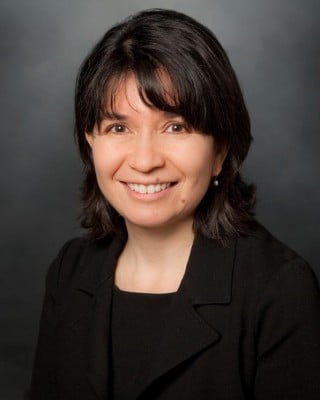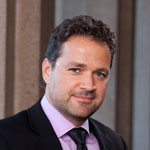 Terhilda Garrido jokingly refers to her colleagues as a “mini SWAT team of consulting.” That’s because she’s infamous for leveraging the experience of her 25 Kaiser Permanente employees across many areas for dynamic results. In 2004, Kaiser Permanente implemented a $4 billion electronic health record investment and more recently analyzed Watson’s ability to affect health care. Although the Jeopardy-playing supercomputer may still be in Kaiser Permanente’s future, Garrido is now focused on helping the nation’s leading nonprofit health plan and hospital network navigate an industry that finds itself in the middle of a revolution.
Terhilda Garrido jokingly refers to her colleagues as a “mini SWAT team of consulting.” That’s because she’s infamous for leveraging the experience of her 25 Kaiser Permanente employees across many areas for dynamic results. In 2004, Kaiser Permanente implemented a $4 billion electronic health record investment and more recently analyzed Watson’s ability to affect health care. Although the Jeopardy-playing supercomputer may still be in Kaiser Permanente’s future, Garrido is now focused on helping the nation’s leading nonprofit health plan and hospital network navigate an industry that finds itself in the middle of a revolution.
1.
Leading the Digital Renaissance
It sounds surprising, but the biggest development in health care today is driven by something simple: computerized files. What hit the banking industry 30 years ago is finally transforming the world of health IT. To someone like Garrido—a Princeton-, Berkeley-, and Harvard-educated analytics and statistics professional—it’s a welcome change. “It’s taken us so long to catch up because the data is unbelievably complex and varied,” she explains.
Apart from the sheer intricacies involved, providers have lacked the incentive to computerize and move away from the traditional manila folder system. Garrido has spent half of her 20-year tenure at Kaiser Permanente patiently supporting the gradual implementation and value realization of this transformation into the digital age. It’s now finally a full part of health IT.
The computer, after all, should be more than an expensive typewriter. Garrido’s team works tirelessly to monitor the digital revolution to improve the quality of care and service for patients and members.
The first step is the collection of best practices in a huge organization with $50 billion in revenue, 37 hospitals, more than 500 medical offices, and 17,000 physicians. Garrido has led her team to become experts in knowledge management and pulling data for new discovery. “We go thorough statistical analysis to discover where there is an impact,” she says.
Up Close & Personal
with
Terhilda Garrido
As a child, what did you want to be when you grew up? A business solicitor scared me into thinking college was too expensive so I became a valedictorian who took stenography. Thankfully, I had a great counselor who saw that I was skilled in math and science and encouraged me to follow that path.
What activities do you enjoy outside of work? I love sports and dancing. I play tennis and take all kinds of dance classes. I ski, and wakeboard, and golf … and I travel with my family as often as possible.
Where is your family from? My father is from a small town and met and married my mother in Mexico City. He was an undocumented worker for a period of time and then they became documented residents and naturalized citizens. I became the first woman in both sides of the family to attend college.
2.
The Patient Portal
At Kaiser Permanente, patients experience a different kind of relationship with their physician. “We are empowering patients and showing them the new way forward in health care,” Garrido says. That’s because Kaiser Permanente has created a patient portal similar to those used in the banking world where users self-authenticate and securely access their health records. Patients can, for example, have a lab test and then access the results on Kaiser Permanente’s website, kp.org. The experience doesn’t stop there—the member portal on kp.org, called My Health Manager, offers comprehensive tools and resources. “Someone with diabetes can click to learn what hemoglobin A1c is and then use online tools to get help,” Garrido explains. Users are even able to send secure e-mails to doctors or use the system to order refills and schedule appointments online.
For Garrido, it’s all about leaving the choice to the patient. “We have studied the impact of this over many years and are publishing articles to show how these steps equal better care,” she says, pointing to increased patient loyalty scores and re-enrollment figures.
The virtualization of medicine is only expected to continue as technology continues to evolve. Telemedicine—a system in which patients interact with their doctor via video—is already gaining traction, and systems like Kaiser Permanente are now robust enough to securely manage these applications. For Garrido, the changes are exciting. “You can take an expensive neurologist and leverage him over a wide geographic area,” she remarks.
3.
Making Health Care More Equitable
As technological capabilities expand, Garrido is carefully monitoring e-disparity—inequalities in access to Internet and mobile-care tools due to race and ethnicity. A recent analysis of data such as income and education levels for users of My Health Manager revealed discrepancies. African-Americans, Latinos, and Asian-Americans enroll for the system—which is equally available—at a slower rate.
With the data in hand, Garrido set out to support full navigation tools in Spanish. Because the secure e-mails on important technical topics are difficult to turn around quickly, her team is investigating the accuracy of automated translation program and has contracted with the National Security Agency’s software provider.
4.
A Brave New World
IBM approached Kaiser Permanente to discuss Watson—the AI natural language-processing computer system. “They wanted to know how a computer that wins chess games can impact the medical field,” Garrido says. Her group worked for four months to understand the technology and investigate potential uses within electronic health-care records. “There is lots of potential, but we found Watson had not graduated from medical school,” Garrido jokes, adding that Kaiser Permanente and IBM remain open to talking again in a few years once Watson’s abilities have developed further.
Garrido can envision a scenario in which Watson-style machines aid in simple data-based decision making, perhaps scanning a rash, for example, and suggesting a certain topical cream. And while a fully robotic clinic may sound intimidating, Garrido insists that nobody is advocating the end of medicine as we know it. “Technology can enhance patient care without eliminating human interaction,” she says. “Nurses are busy documenting, and computers can free them up to spend more face-to-face time with patients.” The goal is to find places where technology can step in to lower costs and increase efficiencies. For now, her job is to harness the potential of an ever-evolving system and find new ways to improve the patient experience in a digital world.

